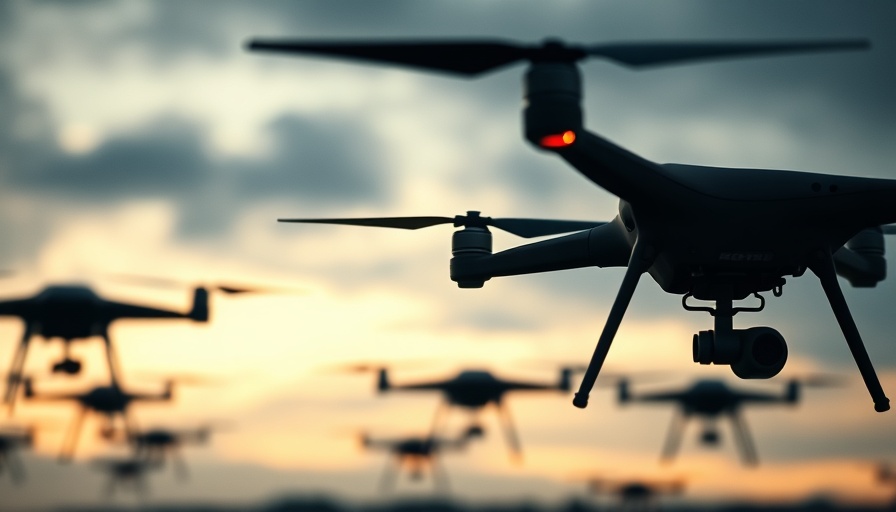
The Drone Warfare Revolution in Ukraine
In a rapidly evolving battlefield scenario, Ukrainian forces have transformed the dynamics of warfare through the deployment of drones, creating a lethal 16-mile 'kill zone' behind Russian lines. These drones, small and explosive, are now a common sight above the fields of war, significantly altering traditional military engagements. As the conflict continues, the impact of this technology is reshaping strategies on both sides.
Why Drones Matter in Modern Warfare
The importance of drones in contemporary conflict cannot be overstated. During the early months of 2024, as Ukraine faced an acute ammunition shortage, the military shifted strategies and turned to small unmanned aerial vehicles (UAVs) to maintain its defensive and offensive operations. Now, Ukraine produces over two million small, first-person-view drones each month, equipped with ever-improving technology. Their ability to scout ahead and strike enemy troop formations and supply lines has created a consistent nightmare for Russian soldiers.
Challenges and Countermeasures in Drone Warfare
While Ukrainian drones currently dominate the skies, the Russian military isn't far behind in the innovation race. Both sides have unleashed millions of drones, each vying for air superiority. Russian forces have developed technologies, including a powerful new jammer known as 'Black Eyes' that could potentially shift the balance of power. However, Ukrainian experts express confidence in outmaneuvering these challenges through specialized drones that utilize non-standard frequencies, ensuring their continued effectiveness.
The Future of Drone Technology and Its Implications
As drone warfare progresses, the implications stretch far beyond the battlefield. This conflict serves as a testing ground for developing military technologies that may influence global defense strategies. The innovations from both Ukrainian and Russian military technologies signify a potential arms race in drone capabilities, including offensive tactics, countermeasures, and the adaptation to new scenarios. This evolution poses critical questions about aerial warfare's ethical dimensions and the future of conflict.
As technology continues to reshape the landscape of warfare, the ongoing developments in drone capabilities warrant close attention. Insightful discussions around the ethical impact and technological innovations in warfare are crucial for understanding what lies ahead in a world increasingly defined by advanced military technology.
 Add Row
Add Row  Add
Add 




Write A Comment